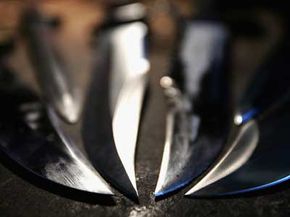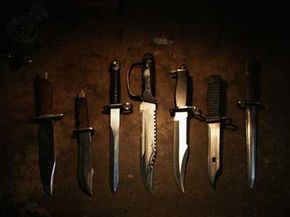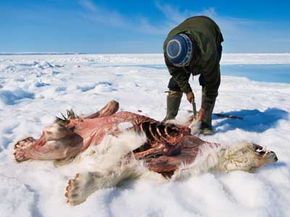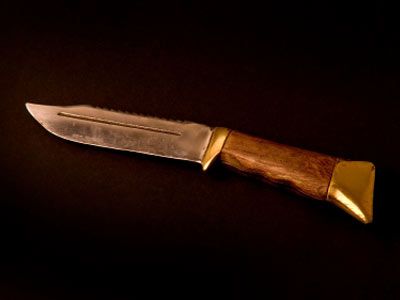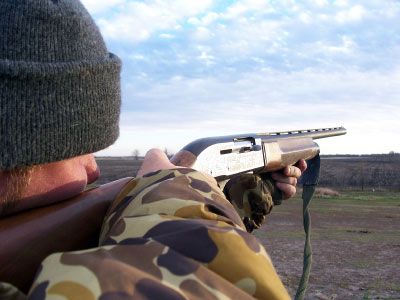A quality hunting knife is versatile enough to do everything the average hunter needs -- from skinning the animal to splitting through its ribcage and bone. When you're choosing a hunting knife, it's important to consider how you'll use it and the type of game you plan to hunt. Clearly, the big game hunter will use a different type of knife than someone who hunts rabbits. And, if you think bigger is always better, you'd be wrong. An oversized knife will make cleaning small game harder, not easier, and increase your chances of cutting yourself.
Once you've determined what size knife you want, consider how often you hunt. If you only hunt occasionally and you want a knife that can be used for a variety of purposes, you may want a smaller folding blade knife. If you're a dedicated hunter and plan on using your knife only for hunting, a solidly-built fixed blade knife may make more sense.
Advertisement
Next, you've got to decide whether you want to carry your knife in a sheath or keep it in your pocket. It's obviously not a good idea to carry a large fixed blade knife in your pocket -- unless you want to slice open your leg. And, as always, your budget is an important consideration as well. Hunting knives are available in a wide variety of prices, and you want to get the best knife possible for your money. Fortunately, no matter what type of knife you choose, it'll be capable of handling most hunting duties. The only reason you may require a second knife is if you're interested in a trophy mount. If so, you may consider also investing in a capping knife, but we'll talk more about those later.
